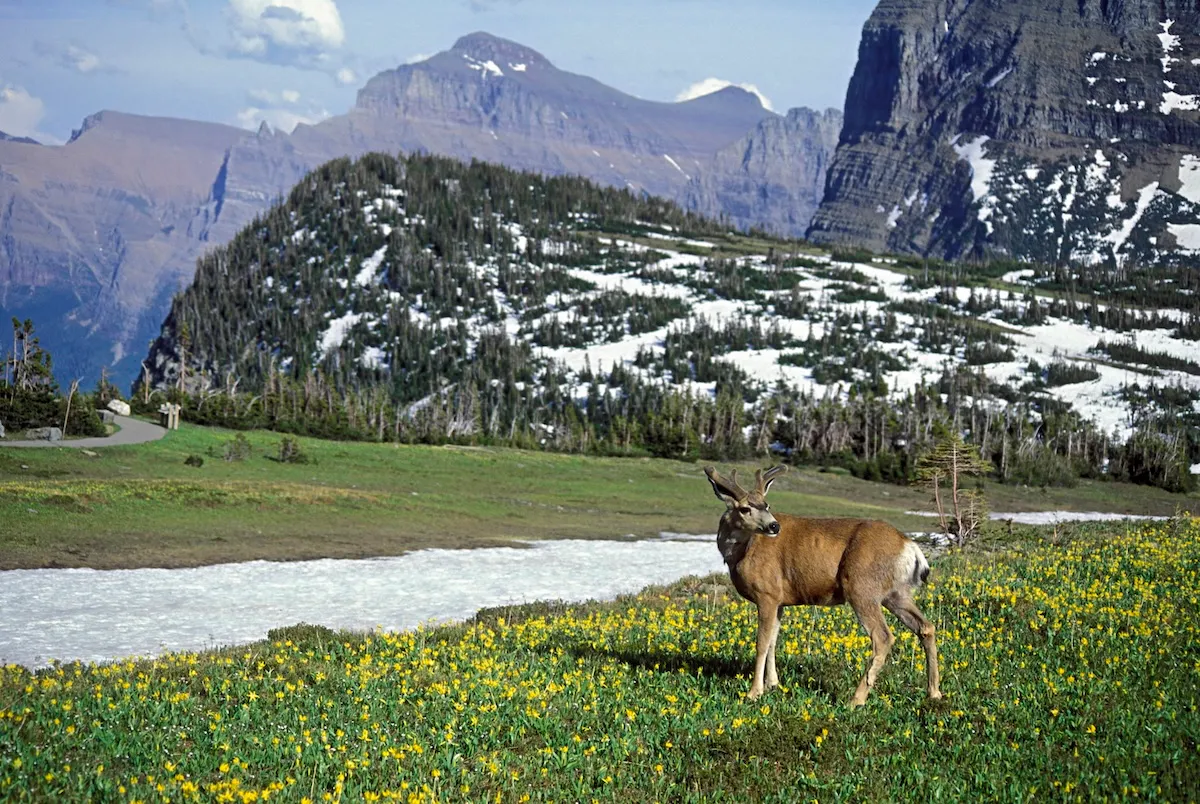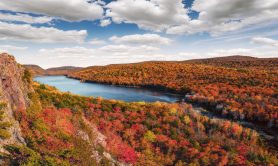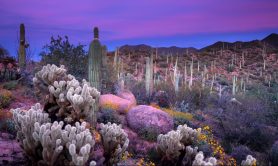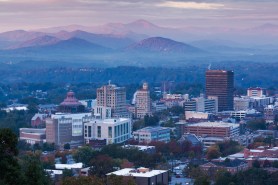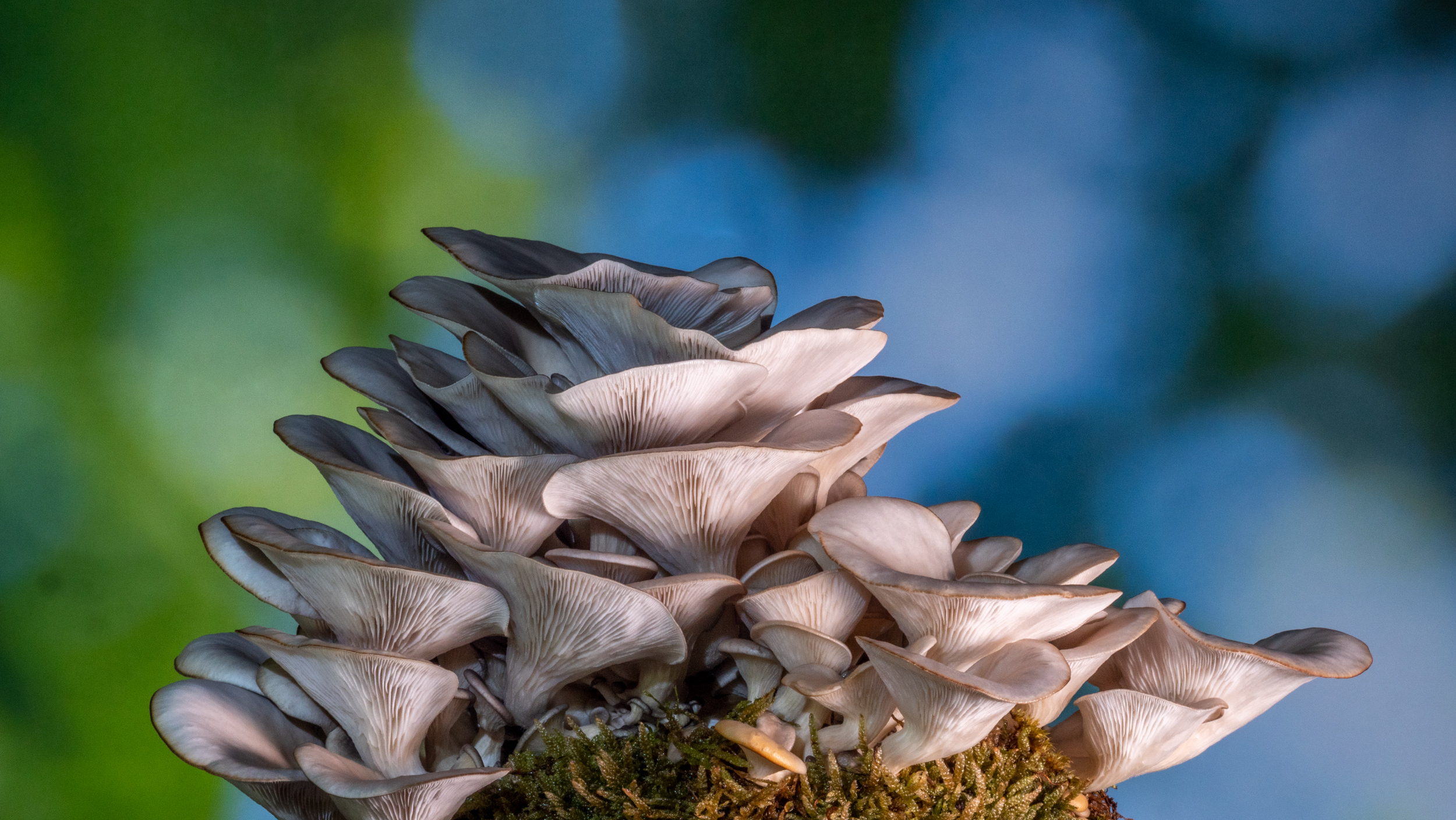

Mushrooms are truly fascinating and are a diverse group of organisms, used for centuries as a source of food and medicine. While many wild mushrooms are safe to eat and can be a delicious addition to your meals, some species can be toxic or even deadly if ingested.
Videos by Outdoors
We spoke to two mushroom foraging experts, Jacob and Sam Brigham, the owners and operators behind North Fork Mushrooms, a gourmet and medicinal mushroom operation in western North Carolina. Here, how to identify five common edible mushrooms you may come across in temperate climates throughout the U.S. (But please note: You shouldn’t eat anything unless you’re totally sure you’re correct.)
Chanterelles
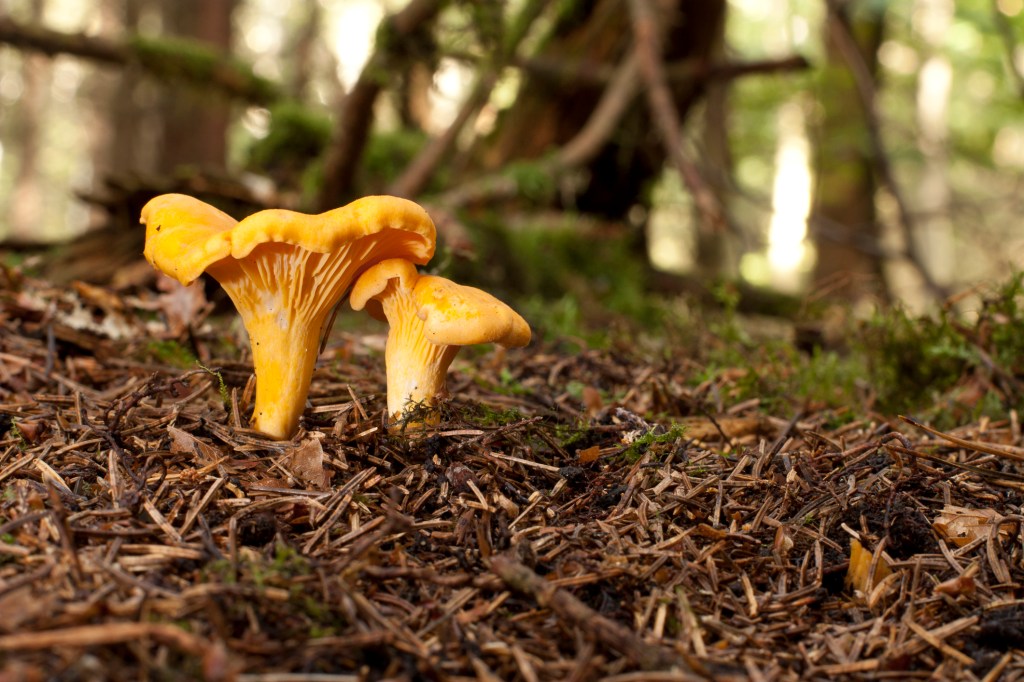
Where you’ll find them: Chanterelles thrive in lush habitats of hardwood forests all over the U.S. Keep an eye out for these golden treasures on the ground, as they tend to be nestled in grass or leaf litter. You won’t find them on decaying wood or trees, as they prefer a more grounded home. While it’s possible to stumble upon a single chanterelle, they usually grow in small groups and sometimes in large clusters. They enjoy partial sun and growing on slopes with good drainage. Don’t forget to take note of where you find them, as these mushrooms tend to reappear in the same spots every year.
Best time of year to forage: These golden mushrooms start popping up in May and continue to flourish until October. The prime time for growth can vary from one region to the next. In the Appalachian region, they come up late July to August and have three or four flushes. For those eager to hunt for these culinary gems, early fall is the perfect time, before they are covered by fallen leaves.
What they look like: Chanterelles are golden to light orange in color and can grow in very large patches. They have what are called false gills that look like the real deal from the top, but if you turn the mushroom over and examine the underside, the gills don’t extend all the way to the margin or the edges of the cap, nor do they extend all the way down the trunk or the stem. Chanterelles are typically 2 to 4 inches tall but can be up to 6 inches wide. Chanterelle should look light, flowery and delicate—no big nodules or any meaty substance very far from the stem.
Forager, beware: People call the large orange mushroom Jack-o’-lanterns “the Chanterelle twin,” but the two are very dissimilar if you know what to look for. The best way to tell is that a Jack-o’-lantern will appear to glow in the dark if you cover it, and chanterelles will not. Jack-o’-lanterns also have true gills that spread apart, unlike the false gills of chanterelles.
Chicken of the Woods
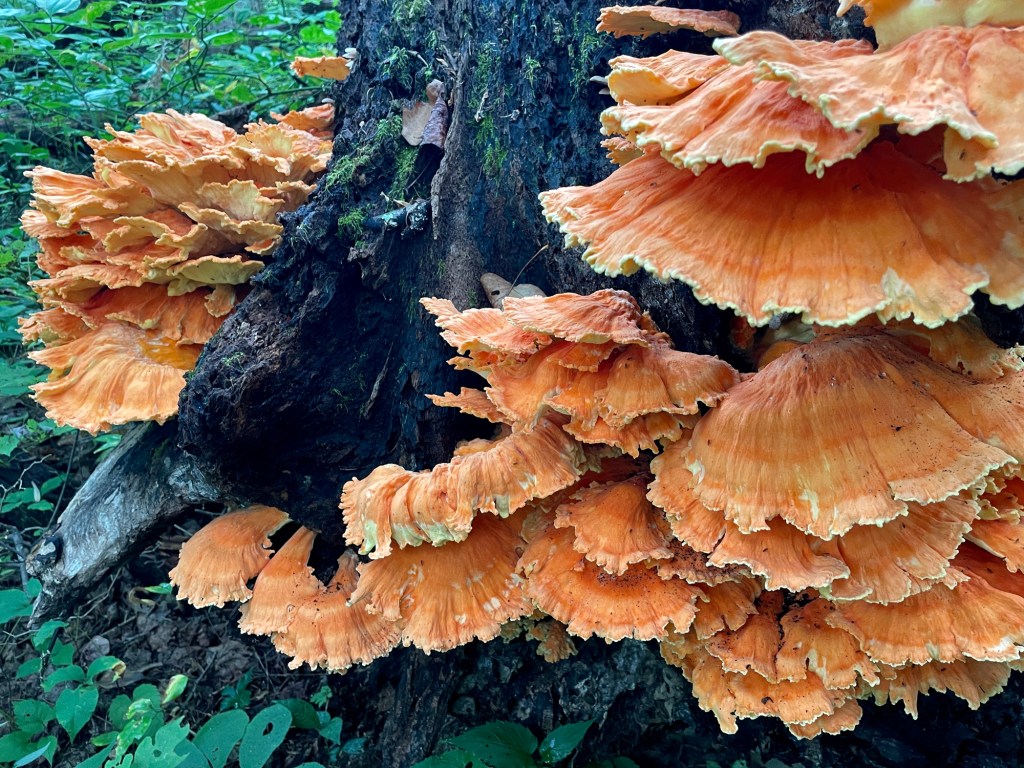
Where you’ll find them: These mushrooms grow on hardwoods and thrive in forested areas, where it’s warm and wet. They tend to grow in overlapping clusters on stumps, trunks and logs of dead or dying deciduous trees, but can also be found on living trees and roots that are buried. The clusters they are found in are often very large and tend to be found in the same location year after year.
Best time of year to forage: When the seasons turn warm, the mycelium of mushrooms is triggered and signals to be able to fruit. Mature Chicken of the Woods usually pop up in later September or early fall but can be earlier in warmer climates.
What they look like: Chicken of the Woods has an apricot yellow-orange or sometimes red color. With sunburst-like shading, you can usually spot them from far away because they’re so vibrant and pretty, with a shape that looks similar to a chicken’s rear end full of ruffled feathers. These mushrooms can grow very wide and very thick, and can vary in size dramatically—they could be the size of a little tennis ball cluster or half the size of a recliner chair! Chicken of the Woods has a sponge-like texture but the older and larger they get, the less soft and juicy they are. Finding just the right size can be tricky, but if you do, they’ll taste amazing.
Forager, beware: One interesting thing about these mushrooms is that they have a white textured surface underneath but no gills. This is important to note because many orange and yellow funguses that have gills are not edible.
Lion’s Mane

Where you’ll find them: Lion’s Mane grows singly, on the trunks of living deciduous trees and on dead and decomposing fallen trees and logs of hardwoods like beech and oak. They do not grow on the ground, like many other mushrooms.
Best time of year to forage: You can usually find Lion’s Mane mushrooms anytime from August to November.
What they look like: Lion’s Mane appears like a globe of white “icicles” that are slim and almost fuzzy—or you could say they look like the hair of a lion’s mane, hence the name. They’re very easy to spot and make a good beginner-friendly find. They have a fishy taste that kind of mimics crab. What makes Lion’s Mane special is that it’s also an adaptogenic medicinal mushroom said to have a host of health benefits.
Forager, beware: Lion’s Mane has two cousins called Coral Tooth or Bear’s Head that are also edible. Lions Mane grows in a bulbous shape; Bear’s Tooth appears more like dripping candle wax and Coral Tooth has spindly branches.
Oysters
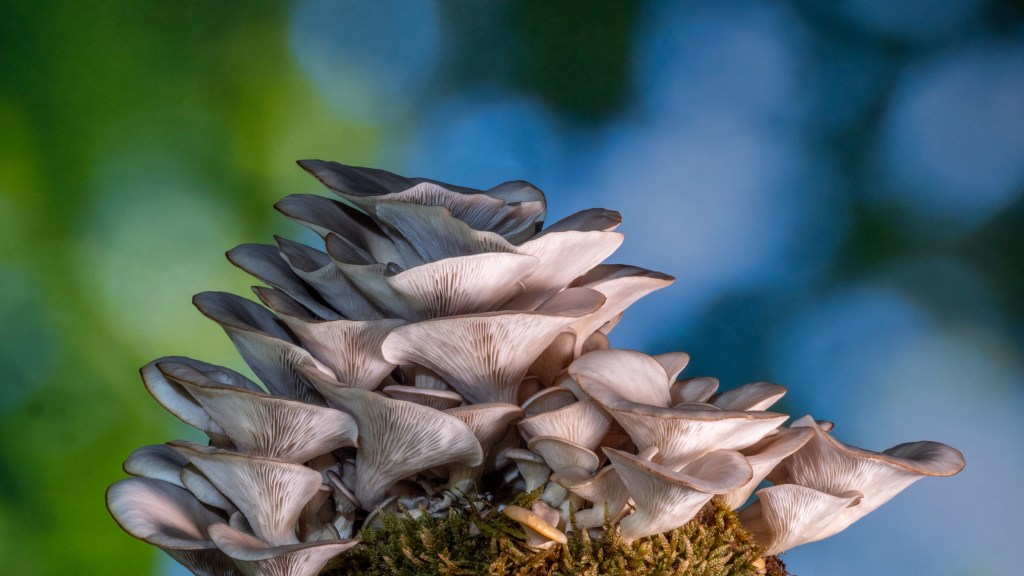
Where you’ll find them: Like others on this list, oyster mushrooms favor growing out of hardwoods, particularly beech and oak trees.
Best time of year to forage: Oyster mushrooms grow throughout the entire year, making them less seasonal than other mushrooms. They can sprout up at any moment, it seems, and can be warm-weather loving as well as survive in colder temperatures.
What they look like: Oyster mushrooms tend to be about 3 or 4 inches in height with a tubular shape that expands out then flattens on the top. They’re very moist and are viewed as being a bit “wiggly.” If you turn one upside down, you can see its gills, and may notice it resembles a trombone or trumpet. Oyster mushrooms can be in various colors, including blue, gold, pink, grey, black, white and brown. One of the telltale signs when you’re foraging for them is that they appear to be in bouquets that grow out from a single point, with a bunch of trumpets coming up to look like a little mushroom bush. Good news: You don’t really have to worry about mistaking a different mushroom for an oyster mushroom.
Morels
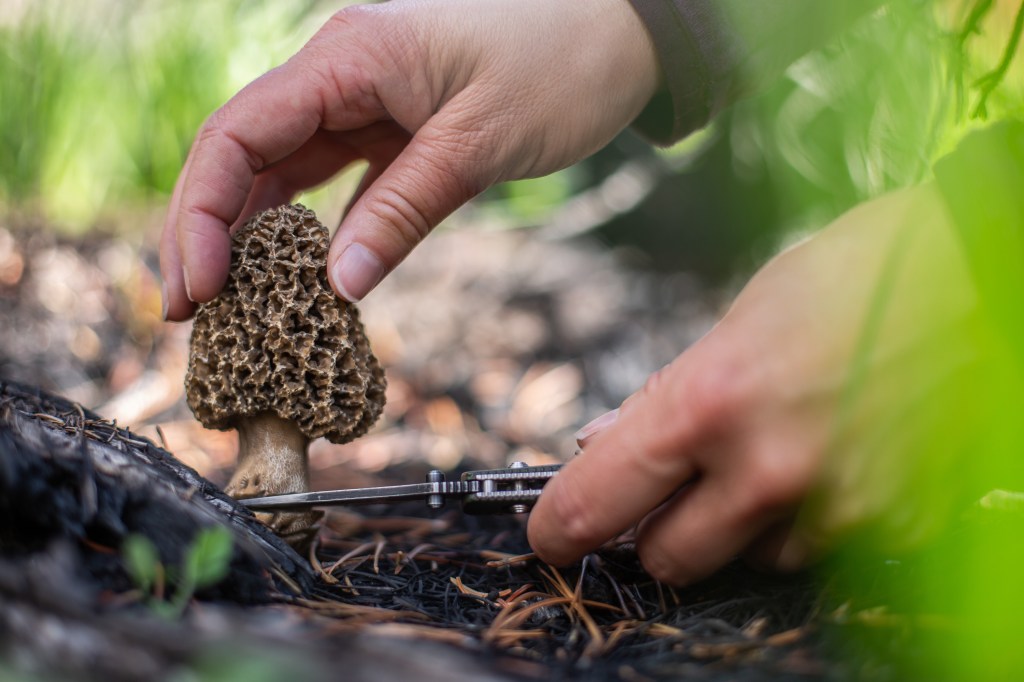
Where you’ll find them: Morels grow in the ground, rather than in wood, like many others on this list. These unique mushrooms can be found in various habitats such as moist woodlands and river bottoms. Morels have been known to thrive around ash trees, dying elms and apple trees, though they can also be found in other locations. They also tend to grow in clusters, so if you find one, there’s a good chance there are more nearby. While morels are relatively common, they can be elusive, making the hunt for them all the more exciting.
Best time of year to forage: In the area of the Appalachia, people will say that when the poplar trees’ buds get the size of a mouse’s ear, you look for the morels. Depending on your location, these mushrooms typically appear in the spring, around late April to early May.
What they look like: Morels are highly sought after by foragers and chefs alike, but they can be tricky to identify. These mushrooms are cone-shaped with a distinctive honeycomb-like cap and a hollow stem. The cap can be light tan to dark brown, and the stem can be white or pale yellow.
Forager, beware: Morels do not have gills, so it’s not a Morel mushroom if you do see gills. You can identify a true morel from other similar-looking mushrooms by cutting it open. Morels are completely hollow on the inside while imposters are not. False morels can be poisonous, so you must be 100% certain that you have a true morel before consuming it. Also, be sure to cook Morels well before consuming.
Jacob and Sam Bingham, the owners/operators behind North Fork Mushrooms, a brand new gourmet and medicinal mushroom operation where they cultivate high-quality products for their surrounding communities in Western North Carolina. You can find them online at northforkmushrooms.com and follow them on Instagram.
This article was updated on January 3, 2024.
